As a mobile marketer, your goal is to help your company’s mobile app or game reach new heights of success.
One effective way to achieve this is through paid advertising, which can help you acquire new users. However, to make sure you’re reaching the right users, you need access to data about your target audience.
Unfortunately, privacy regulations can sometimes be a major obstacle to gathering audience insights.
Yet, mobile marketers are creative problem solvers, and the recent privacy changes in the mobile industry don’t have to be the end of the road.
In this article, we’ll explore alternative strategies that can help marketers overcome privacy regulation challenges to continue to grow their mobile app or game cost-effectively.
The top privacy regulations that matter to marketers
Marketers must comply with the privacy laws and regulations of relevant countries and technology vendors.
A marketer’s biggest problem is how to find out as much as possible about their audience while adhering to the latest regulations. Personal Identifiable Information (PII) data is highly sensitive material and increasingly protected.
The demographic of most apps’ users will be typically split across specific markets.
However, every app marketer needs a Privacy Policy compliant with the legislation of each market they serve; therefore, global compliance is required. You may think this doesn’t matter if you don’t collect personal data within your app. More than likely, though, you’re using third-party tools, like SDKs or ad networks, which means you still need a Privacy Policy.
Privacy regulation laws by countries
- EU
The most famous: GDPR
General Data Protection Regulation (GDPR) explains the rules regarding the collection, use, transmission, and security of data collected from residents of the European Union (28 members). Users must give explicit, unambiguous consent for the collection of their personal data, including any information collected via cookies. Under GDPR, even computer IP address is considered personal data – as opposed to laws in the USA.
- US
The most diverse: US data privacy laws
The US has hundreds of laws regarding data privacy and security, which vary by state. California followed suit with GDPR, followed by four other states: Colorado, Connecticut, Utah, and Virginia.
In California, the California Consumer Privacy Act (CCPA) is the local version of GDPR. It requires data processors to inform users of when and how data is collected, and users must be able to access, edit or delete their data. This notice must be disclosed in a privacy policy on the website or app.
- Brazil
Leading the way in South America
Brazil’s version of GDPR is called the Lei Geral de Proteção de Dados Pessoais, or LGPD. Even if your company isn’t headquartered in Brazil, you must follow this law if you process data from Brazil-based users.
Find out more about what mobile app publishers need to do to respect regulations here
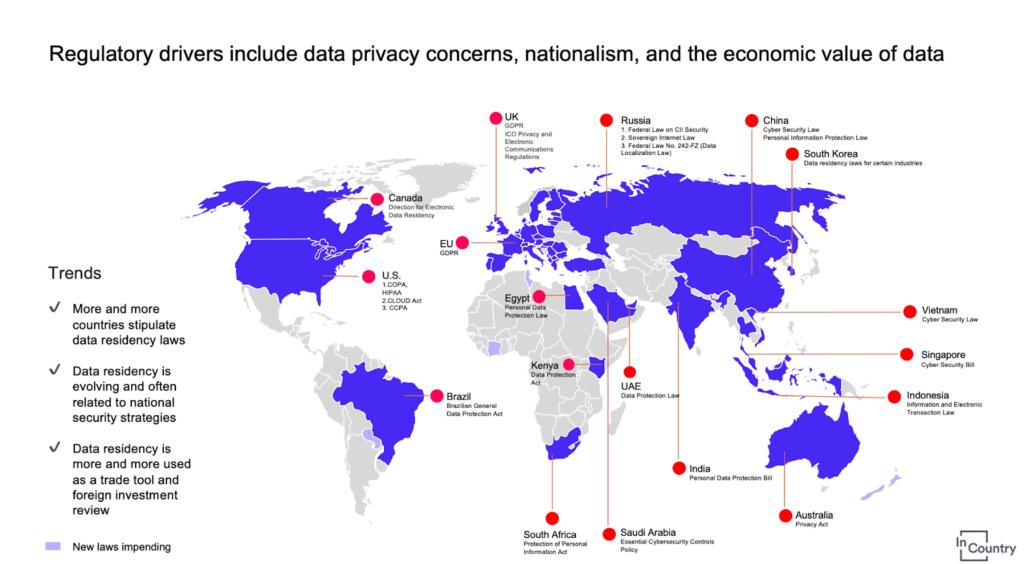
Privacy regulation laws by tech vendors
Privacy change decisions made by the two main smartphone platforms, Apple (iOS platform) and Google (Android platform), have the most significant impact on mobile marketing strategies.
- Apple
On 26th April 2021, Apple released a new version of its iOS: iOS 14.5.
This update introduced a significant change to a critical tracking feature used by mobile marketers: IDFA (Identifier for Advertisers).
IDFA is used to target and measure the effectiveness of advertising on a user level across mobile devices by identifying consumer behavior such as:
- when a user interacts with a paid campaign, such as a Facebook retargeting campaign
- the in-app event that triggered the user to take action, such as clicking an advertisement
Since the iOS 14.5 updates, apps are required to ask permissions to users to collect and share their data. It is called App Tracking Transparency (ATT). Before iOS 14.5, it was not required to ask for explicit consent from the user to get their IDFA. Users could still manually opt out of sharing their “IDFA” in the phone’s setting (it was called “Limited Ad Tracking – LAT”).
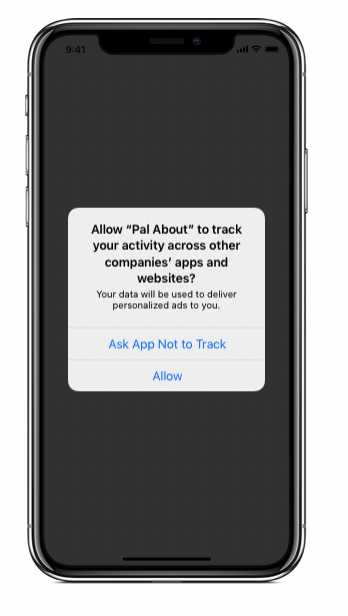
Android’s IDFA equivalent is Android Advertising ID (AAID), which behaves the same, allowing third parties to track users on mobile devices.
Since the release of Android 12 in October 2021, users have been able to delete their ad ID manually permanently. However, the big difference with iOS is that Android doesn’t force app publishers to request permission to track users before appending the Ad ID to them.
Instead, AAID tracking is the default; the user has to delete their advertising ID in the privacy section of their phone if they wish to opt out.
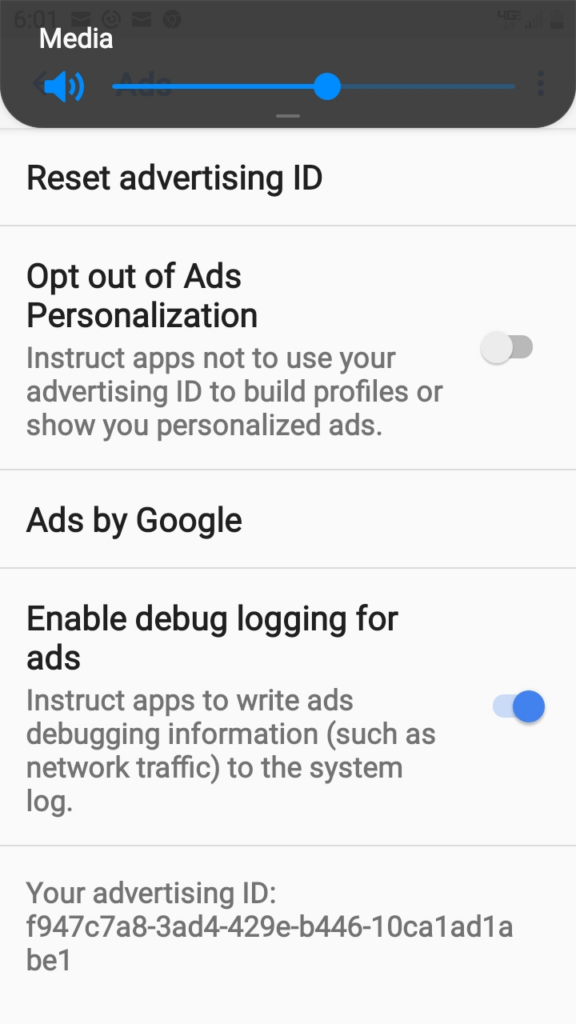
This difference in default permissions between iOS and Android creates an imbalance in data tracking on the two platforms, especially for paid campaigns.
However, things could change quickly on Android as the future of Google Ad ID (GAID) remains uncertain. In February 2022, Google announced it would keep GAID live for “at least two years” while pushing for its Android Privacy Sandbox: a privacy-first API ecosystem similar to SKAdNetwork for iOS.
For mobile marketers, Android has become a more reliable source of campaign effectiveness reporting than iOS, and that’s why more ad campaign testing is performed on Android vs. iOS.
The impact of IDFA opt-out for mobile marketers
Suddenly, mobile marketers faced a gap with the loss of IDFA data, and so they couldn’t analyze their marketing campaigns’ effectiveness like they used to.
IDFA leads to loss of app install attribution and measurement data. When users open the app, they see the message: “allow app to track/not to track,”.
As a solution that informs marketers while maintaining user privacy, Apple launched the SKAdNetwork, a privacy-centric API.
This framework appends attribution parameters upon the ad click, so when the app is installed and opened for the first time, it will send the install information (postback window) to the ad network so that the effectiveness of a specific campaign in regards to conversion is well measured.
In the meantime, SKAdNetwork information remains anonymous, with no user-level identifiers.
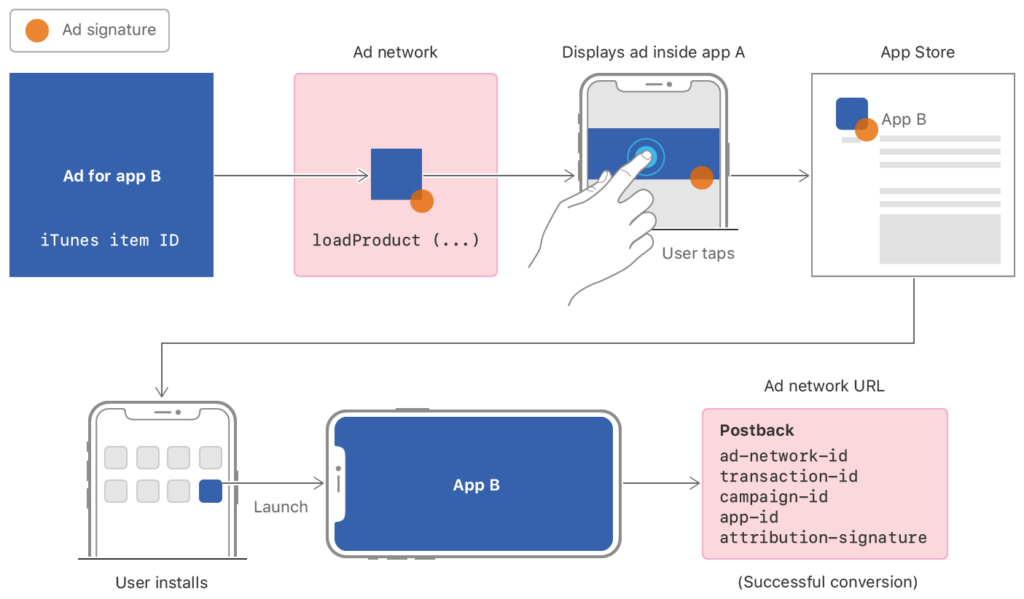
Meanwhile, the IDFA change also impacted mobile measurement platforms (MMPs) such as Adjust and Appsflyer, which built workarounds to compensate for the loss of attribution data.
For instance, Appsflyer created an Aggregated Advanced Privacy (AAP) algorithm to keep providing an iOS 14+ robust attribution model.
Industry Impact of IDFA
The mobile industry initially predicted the introduction of ATT explicit opt-in to lead to approximately 50%-60% of users opting out of IDFA globally.
However, more than a year after iOS 14.5 implementation, the percentage of users opting out of IDFA differs significantly and is determined mainly by the nature of the app.
For example, in October 2022, AppsFlyer found that 62% of iPhone users were opting out of sharing their information.
The impact of IDFA was also a big concern for significant ad networks like Facebook, Snapchat, Twitter, and Youtube. Meta said the company anticipates losing more than $10 billion in sales revenue.
Research from Tenjin in March 2022 showed that almost 40% of US and UK mobile companies had lost revenue since Apple implemented changes to its identifier for advertisers last year.
For iOS developers, mobile agency Consumer Acquisition estimated 15-20% of revenue had been lost on average, with some 30-40% down in revenue.
- The impact of iOS14.5 on paid campaigns
For marketers using paid social platforms, some campaign settings for specific objectives became less effective, including:
-downstream event optimization: targeting users who purchased item A within the last seven days.
-‘Lookalike audience’: targeting new people who share similar characteristics to your current ad targeting.
“Pre IDFA deprecation, you could just upload huge lists of users that paid for your product and run lookalike campaigns with it on Facebook, and you would always win, now that world is gone.”
Francisco Pacheco, Co-Founder, and CPO at Replai.
Many app publishers targeting “whales” across social media (i.e. players with a propensity to spend more significant amounts of money within the game) were the most impacted by the loss of IDFA.
Overall, two successful marketing targeting strategies have taken a hit:
- App Event Optimization (AEO): targeting users based on their behaviors within the game. For example, you won’t be able to retarget users who purchased in your app with a specific creative
- Value Optimization (VO): targeting people whose ad network’s algorithm presumes they will spend some amount of money on the game
- Analyzing the data loss
Core games have been more affected than Casual gaming in the gaming genre, as they focused more on AEO and VO targeting strategies.
In our recent webinar with Huuuge Games, Beach Bum and Product Madness, Alexander Ruban, Head of Growth Strategy at Product Madness, shared his thoughts on iOS 14.5 challenges:
“For myself, it’s targeting and reporting. We have targeting limitations at the moment. We’re not able to target the users we want to. Regarding reporting, we’re not receiving the data from our campaigns like we used to. So for iOS, we’re not receiving anything post-day-one of the campaign. In terms of creatives, AB testing is more difficult now. Understanding creative performance is way harder, for example, understanding post-install metrics across the different ad networks. We’re also struggling with the reporting on the creative or geo levels.”

Beyond the impact on formerly successful targeting strategies, the cost of targeting users across social media has increased.
There is a rise in CPMs (cost per mille impression) across the board, which means it’s becoming increasingly expensive for mobile app companies to acquire new users on iOS.
On iOS, Creative A/B testing will take some time to see results since SKAdNetwork postbacks contain limited data and are delayed. In addition, incrementality testing is not possible. For example, you can’t track the number of users who saw a placebo ad instead of your new ad creative, and converted, versus those who did see the ad creative.
IDFA deprecation forces mobile marketers to be more flexible with creative testing. Matej Lancaric, industry veteran and UA expert, recommends not to execute creative testing on iOS altogether: “[I’m] not sure why people became obsessed with iOS14 creative testing. My advice, stop wasting money on iOS14 creative testing and use that budget more wisely. “
Tips for successful post-iOS14.5 mobile marketing campaigns
- Making ads tailored to specific personas.
In a post-IDFA world, Facebook, Branch, and Consumer Acquisition recommend focusing on “persona-led creative“ .The idea is to group target users by specific personas and build creatives that resonate with that persona. So, for example, if you want to focus on a persona “explorer” (i.e., someone who loves exploring new worlds) – you’ll need to build creatives that match this desire to explore.
With algorithms, paid social networks will build user segments that share these traits based on behaviors and current creative trends.
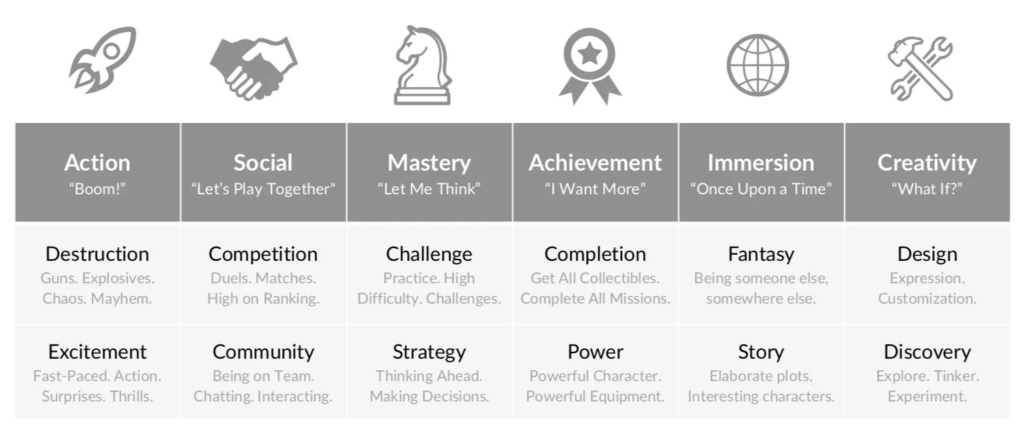
- Testing creatives on Android first
Many mobile marketers are first testing their campaigns on Android since the signal loss isn’t as substantial on that platform. There is a trend to move more money (or at least testing money) toward the Android platform instead of iOS.
Suppose a creative is proven successful on Android. In that case, it can be copied for iOS – but remember, replicating campaign settings for iOS may not necessarily lead to success as targeting will ultimately be different.
- Diversifying your ad networks
iOS 14.5+ caused much damage to Facebook, previously mobile marketers’ favorite ad network, due to its sophisticated targeting capabilities and overall campaign performance results.
Now launching campaigns on Facebook is more complicated. It’s impossible to get as granular with targeting and analytics or to identify users as accurately.
Now, app publishers have to diversify their ad networks to mitigate risks and test and compare the different platforms. For instance, more money is being spent on Tiktok, which has cheaper CPMs.
Other ad networks are growing, such as Moloco, with constantly evolving machine learning bidding and targeting strategies to optimize campaign performance.
Why iOS14.5 pushes marketers to be more creative
- Adapting workflows to include more creative designs and tests
iOS 14.5+ weakens marketing campaigns’ targeting efficiency as AEO or VO targeting capabilities are less reliable.
Therefore, the creative becomes more important in optimizing engagement and clicks. Before iOS14.5, the creative was less of a consideration (providing the targeting was accurate).
For example, a campaign would focus more specifically on targeting Facebook users with a high propensity to spend on match-3 games. Now, the art and science of design take the lead role. As Consumer Acquisition describes: “The most important lever in performance advertising is now creative, due to IDFA loss and media buying automation.”
For most mobile companies, a ‘hero’ creative leads campaign performance (i.e., a creative selected by ad networks for most of the spend as it achieved high audience engagement levels).
Creative strategists will need to keep finding similar ‘hero’ concepts to ensure that app publishers don’t rely on just one winning creative. Likewise, the campaign performance shouldn’t hinge on one creative. Therefore, it’s crucial to produce and test more creatives.
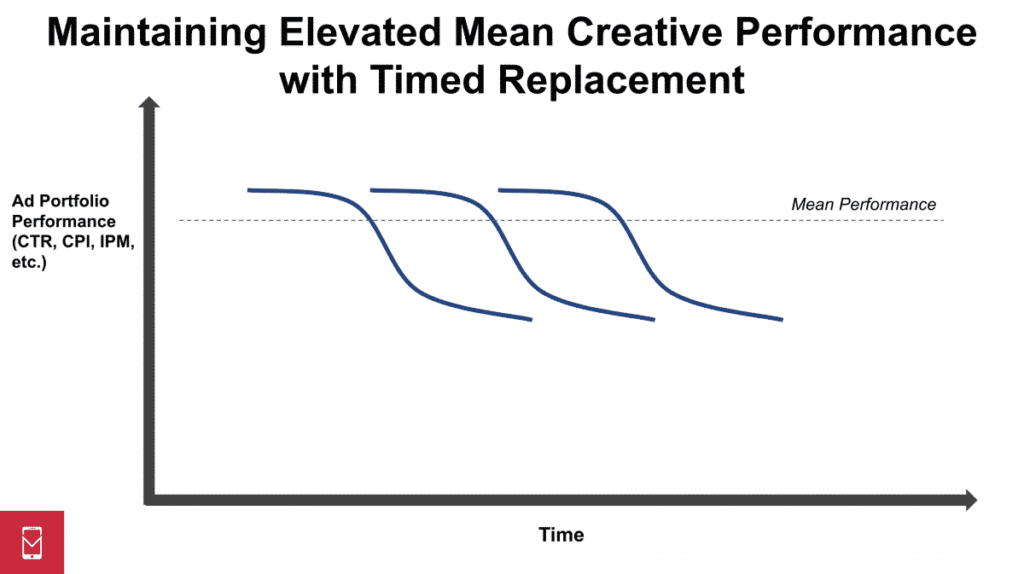
With iOS14.5, creative production and testing become more important, and companies must adapt their workflows appropriately. Only once this testing has been done should a creative be entered into a “business-as-usual” (BAU) campaign.
Mobile agency Consumer Acquisition estimates that 85-95% of new creative concepts fail to perform on the same level as BAU creatives and that 20 to 50 new ideas are needed to get a ‘winning creative’. In addition, hero creatives last, on average, ten weeks before burning out – hence the need to constantly refresh creatives and bump up creative production.
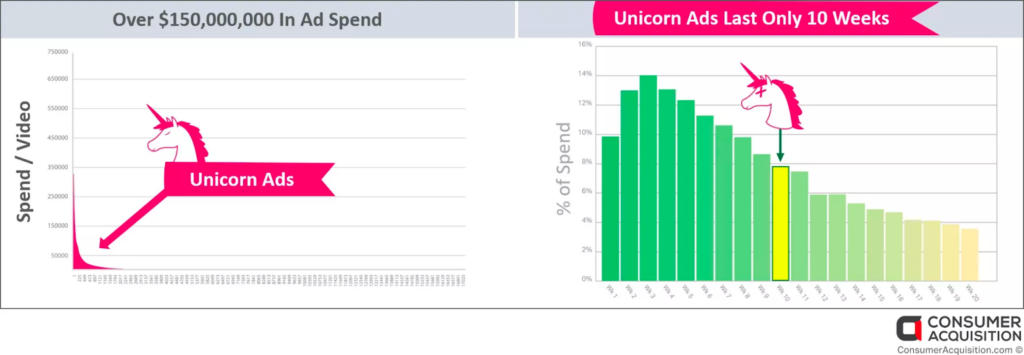
- From data science to the psychology of attention, art, and design
Marketers must spend more time understanding the creative elements capturing their audience’s attention.
Creatives produced without considering the psychology of attention in design are designed to fail.
The type of app matters when designing the creative. For mobile games, players’ motivations are a critical psychological driver to consider to make engaging ads.
In 2021, Facebook released an industry-famous playbook: Facebook’s Big Catch Playbook, which maps the distinct motivations of different players. Creatives must match distinct psychological traits to maximize audience engagement and campaign results.
Facebook’s research revealed 8 motivators that drive gamers:
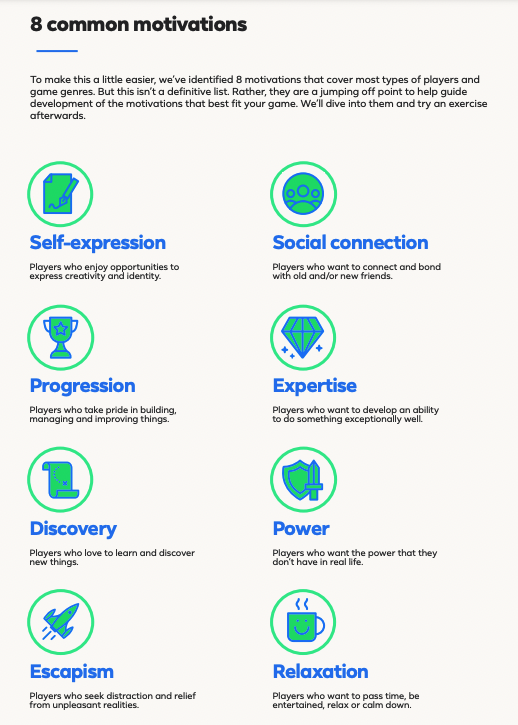
Besides, Branch’s 2021 Mobile Growth Handbook mapped creatives by user intent and recommended aligning the creative with user intent to earn more high-quality top-of-funnel installs.
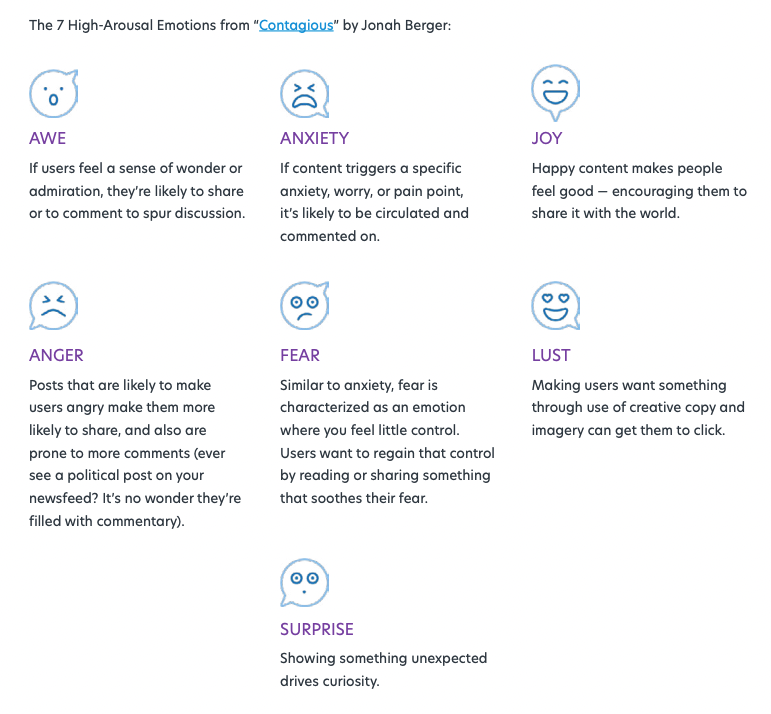
IDFA deprecation has had a monumental impact on mobile marketing analytics, but this change can be positive overall.
The way to analyze performance is also changing. “We try to analyze performance in different ways,” shared Gal Moalem, Creative Team Lead from Beach Bum Games, in our latest webinar. “We break down performance by different metrics: creative performance; networks; audiences, genders, and operating systems. Our method is to keep diverse creatives in our campaigns.”
At this stage, experimenting with user acquisition becomes one big experiment.
“We try to do different creatives according to motivation, gender, and different insights and features inside of our game,” shares Lora Goichman, a creative strategist at Huuuge Games. “And then we see what sticks. So it’s a bit like throwing spaghetti at the wall currently.”
These experiments might even bring in new insights for app publishers they were unaware of. By completely reinventing their approach to mobile app marketing UA strategy, they discover something potentially even better.
- The diversity of creative iterations is critical.
The more diverse the ad creatives, the more likely you will land on a new hero.
Krystel Bitar, Global Gaming Product Manager at Facebook, recently emphasized how critical creative diversification based on motivation is to performance: “it’s time to make different creatives inspired by these motivators.“
In a survey of gamers in the US, Facebook found 12 top motivators for people to play games.
People buy emotively, and we must sell with emotion.
This survey clearly shows that creatives that illustrate a sense of “relieving stress” or “feeling accomplished” will have a more significant impact on consumer behavior.
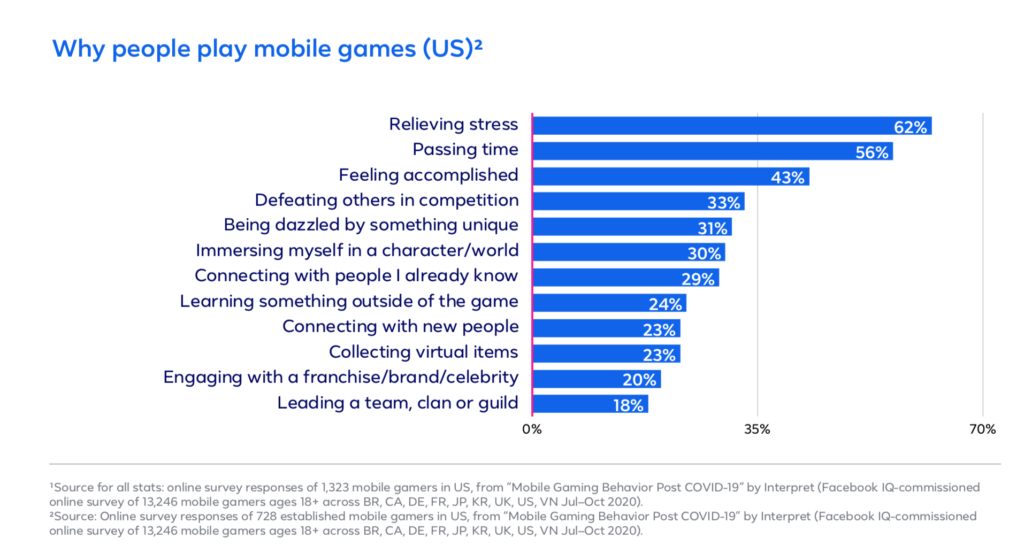
- Market trends and competitive analysis are still a priority.
Mobile marketers have always faced the challenge of finding inspiration to fuel the production pipeline of new creatives.
And now, the pressure has risen once again.
The need to produce more creatives means mobile marketers must bring more ideas to the table. That means they need to look not only at their competitors’ creatives but also at the broader market.
For example, there may be concepts and trends currently doing well on Facebook or Tiktok that could be applied to a publisher’s game or app.
In his post, Creative framework in the post-IDFA World mobile app UA specialist Matej Lancaric shows how Coin Master was inspired by an ad from a completely different genre. After ASMR Slicing by Tricky Tribe went viral, Coin Master started slicing their coins as their version of stress-relieving ASMR.
Besides, mobile marketers have the opportunity to experiment with different ad formats, including:
- Static images (e.g., banners)
- Text ads (e.g., Apple Search ads)
- Video ads
- Playable Ads
The most “sophisticated” ad formats are video ads and playable ads. Mobile marketing teams must try the different ad formats to understand how each impacts performance.
For mobile apps, video creatives are the most common format. The reason is the level of engagement you get from your users. Matej recommends: “use more video ads as it’s the best format to tell a story – as you know “less” about your targeted users.“
Liftoff also recommends the use of video creatives in a post-iOS 14.5 world. “Leverage videos to tell a story. Video ads are a great way to engage consumers and leave a lasting impression. Make sure your video ad is compatible with landscape and vertical formats and add captions so your viewer can understand what’s going on without having to turn on audio.”
Marketers need to reinvent their approach to producing creatives and how they build campaigns. In this post-iOS14.5 world, campaign optimization is more complex than ever. It requires more research and planning and more production and testing. Overall, it’s an opportunity for mobile marketers to differentiate themselves – and their apps – from the competition.
